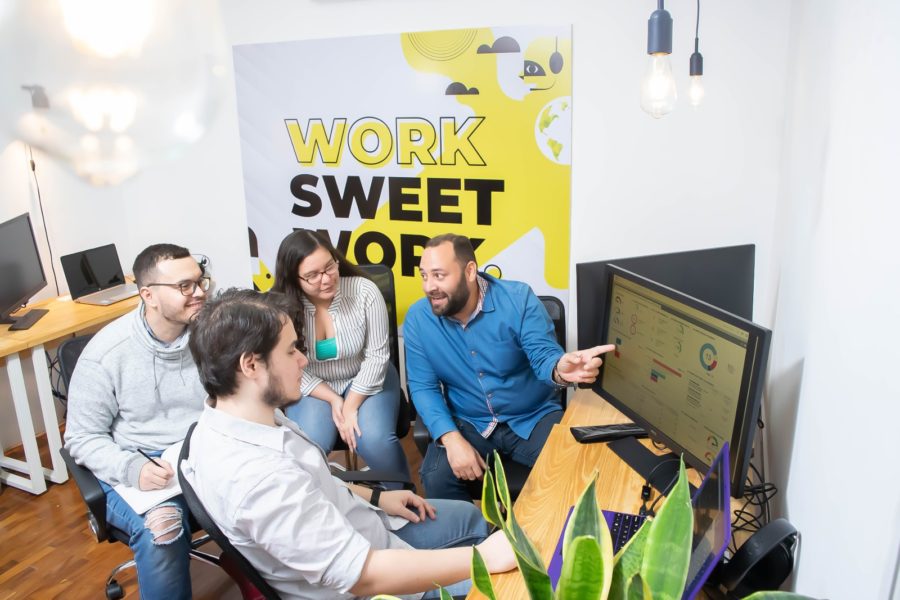When we say listening, it may appear as a very easy task to do. It is a skill you have been exercising for as long as you probably can remember. If practice makes perfect, you may consider yourself an expert at listening. But here is the trick: listening is not the same as active listening. One involves the other, although they are not exact synonyms.
Active listening is a skill, therefore it is something that everyone can develop. It may come easier to some than others but it is up to us to make it grow into something that eases our way through the world, and most importantly, up the professional hill.
It is defined as the ability to focus completely on a speaker, understand their message, comprehend the information, and respond thoughtfully. So as you can see, it is not as simple as hearing what someone is saying and nodding with your head.
You may be wondering, why this matters. And how can I develop it? So, let’s start by breaking it down into its dimensions:
Pay Attention
What do you look at when someone is talking to you? Is it their eyes, their shoes, your phone, or anything else that’s in the room you are in? When it comes to active listening, you need more than just your ears. It involves focusing all your senses on the communication process. The eyes are a big part of it since people often tell more through body language than from their words.
The way people speak, their posture, the volume, the tone they use… all of those give us clues about their full message. It is vital to acknowledge them without getting distracted from what is being said. Paying attention will help you catch the message. To be able to do that, you need to listen without jumping to conclusions and listen beyond the literal meaning of the words that are being said.
Listen To Understand
Here the premise is: Do not listen to respond. Listen to understand. Just like avoiding making assumptions and conclusions while someone is talking to you, listening to understand rather than planning a comeback on the argument or just your next move as if you were playing chess, is a key to actively listening.
It is very common to listen to someone and just wait to respond, trying to be polite and not interrupt until it’s your turn to speak again. Most people might not be aware of that, but it is a behavior that obstructs the communication process. To understand, you have to actively try to do so. Don’t be afraid to ask to clear up questions, to reaffirm the idea to check if you understood correctly.
It is about priorities, the most important thing is to get the message, no matter what. A way to confirm if you understood correctly is to summarize at the end what you got or paraphrase what they said in the way you got it and simply ask if that is it.
An example of this dimension could be when you try to explain to a friend why you want to go to a concert from a group no one knows, and rather than saying that it may not be a good investment, they try to understand why this is important to you so they will be able to support you and perhaps, even go with you.
Respond Thoughtfully

Once you have understood the message and comprehended the given information, it is time to draw your conclusions and provide some feedback.
Throughout the conversation, you have been giving signs that you are listening, whether it was by asking questions, maintaining eye contact, or just showing interest.
Now that you know what they mean, it is your turn to provide information, an opinion, or a suggestion.
This part of the conversation also shows if you listened correctly. When you respond, it is very important to do it in an assertive and empathetic way; you just heard how your employee wouldn’t be able to deliver their task on time because their dog died, so try to show some compassion, bring a solution, and share some similar experiences about how you managed them. The relevant thing here is, to be honest, and respectful, and treat the other person the way you would like to be treated.
A team that understands each other is most certainly successful. Imagine all the time and energy that can be saved from misunderstandings, and how efficient and effective active listening can make any corporation.
This could also improve the working relationships; when you know how to actively listen, people will notice, they will feel understood and they would like to keep working with you.
Knowing how to listen requires self-awareness not to fall into the inner dialogue pattern nor try to answer before actually understanding, but it will bring you many benefits in your work performance and relationships… so, what are you waiting to give it a try?
See more articles by Laura Navarro






